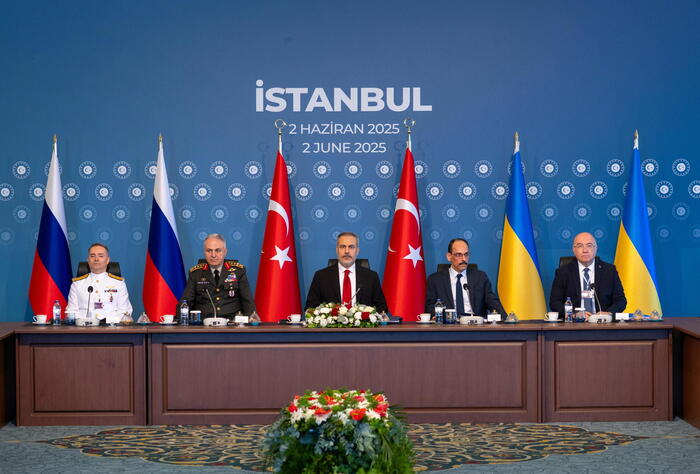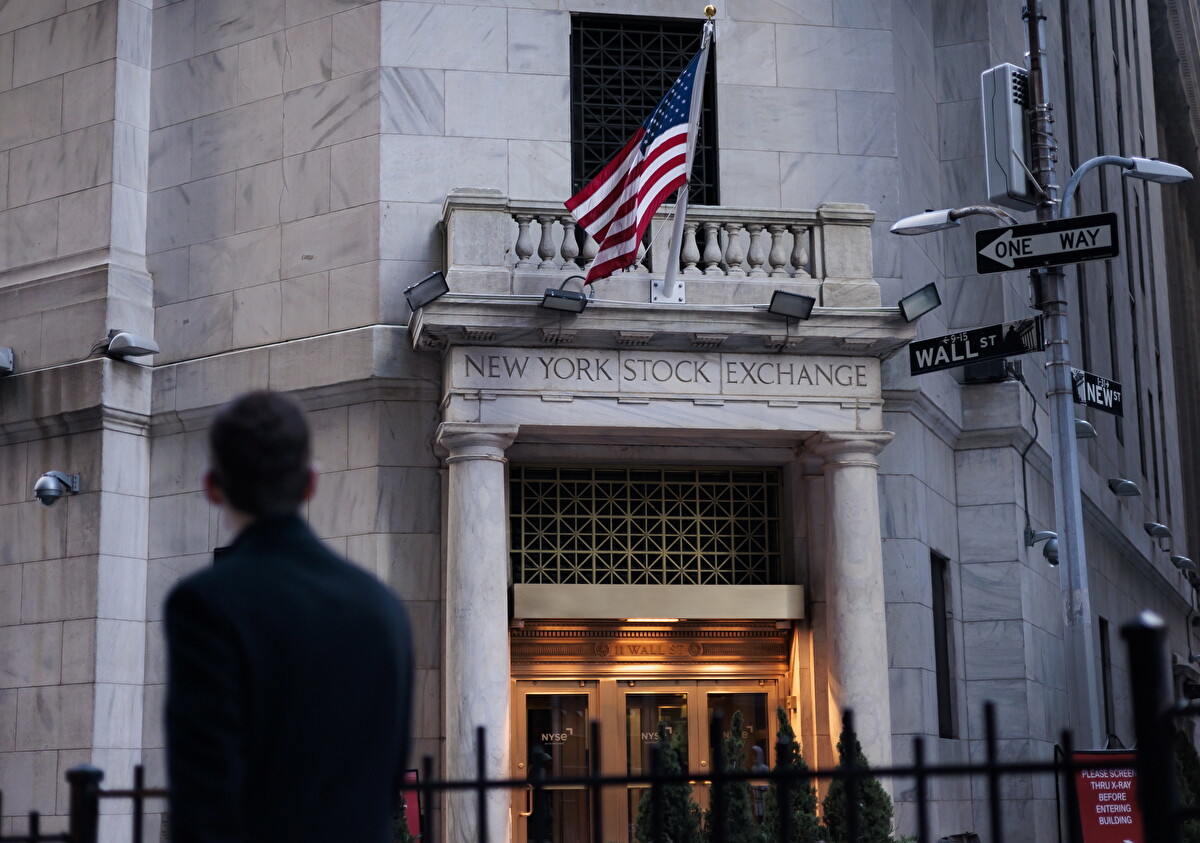A second round of direct peace talks between Russian and Ukrainian officials wrapped up in Istanbul Monday in under an hour, yielding no joint statement but producing a preliminary agreement on a new prisoner exchange. The diplomatic stalemate unfolded just as Kyiv launched one of its most far-reaching drone attacks of the war, striking five Russian air bases thousands of miles from the front line and damaging aircraft tied to Moscow’s nuclear arsenal.
The delegations met at the Çırağan Palace, a former Ottoman residence turned luxury hotel on the Bosphorus. The Russian side was led by Vladimir Medinsky, a senior aide to President Vladimir Putin, whereas Ukraine was represented by Defense Minister Rustem Umerov, joined by Gen. Yevhen Ostryansky, legal advisor Andriy Fomin, and ombudsman envoy Yuriy Kovbas.
Turkey’s Foreign Minister Hakan Fidan opened the meeting by reminding participants that “the eyes of the world” were on the talks. He welcomed the progress made last month and called for a temporary cease-fire, a renewed prisoner exchange, and a direct meeting between Putin and Ukrainian President Volodymyr Zelenskyy. But expectations remained subdued.
Later in the day, Russia’s state news agency TASS published the full text of Moscow’s official settlement memorandum. The document demands international recognition of Crimea, Donetsk, Luhansk, Zaporizhzhia and Kherson as Russian territory, along with a complete withdrawal of Ukrainian troops from those regions. It also calls for Ukraine’s permanent neutrality, meaning no NATO membership, no foreign military presence, and no weapons of mass destruction on its soil.
Other points include strict limits on Ukraine’s armed forces, the dismantling of what Moscow calls “nationalist formations,” and legal protections for Russian-speaking populations. Russia wants the Russian language granted official status, and a ban on symbols and parties linked to nationalism or neo-Nazism.
The proposal also envisions the lifting of all sanctions, the return of displaced persons, and mutual waivers of wartime damage claims. In the final section, Moscow calls for a phased restoration of diplomatic and economic ties, including energy transit and transport links with Ukraine and third countries.
Ukraine, meanwhile, submitted its own five-point roadmap, obtained in advance by Reuters. The plan calls for a comprehensive 30-day cease-fire across land, air, and sea, with the option to renew. It also includes the unconditional return of all Ukrainian children taken to Russia, and a full prisoner exchange on a “all for all” basis. Umerov later confirmed a new swap is now in preparation, focusing on wounded soldiers and younger detainees.
Kyiv also insists it must remain free to pursue NATO and EU membership, and wants the U.S. and Europe formally involved in enforcing any peace deal.
Negotiations over Crimea and other territories seized since 2014 would only begin once hostilities have ended, Kyiv insists. On Western sanctions, Ukraine is proposing a phased rollback, with a snapback mechanism in case Russia breaches any future deal.
The fate of Ukrainian children forcibly taken to Russia remains among the most sensitive issues. “We handed over a list of hundreds of children to be returned,” wrote Andriy Yermak, head of the presidential office, on Telegram. “They were illegally deported or kept in occupied territories. Their return is the first real test of Russian sincerity.” Moscow has not formally replied, but claims the transfers were carried out to protect minors from the fighting.
Russia’s Foreign Ministry described the meeting as “not negative,” without elaborating.
As talks unfolded, Ukraine launched one of its most complex and long-range attacks of the war. In an operation dubbed “Spiderweb,” Kyiv’s military intelligence service (SBU) deployed 117 kamikaze drones from civilian trucks with mechanized roof compartments, targeting five Russian airbases up to 2,500 miles from the front lines.
Airfields near Belaya (Irkutsk), Olenya (Murmansk), Ryazan, Ivanovo, and Amur were struck. Ukrainian sources say 41 aircraft were damaged or destroyed, including Tu-95 and Tu-22 bombers — key components of Russia’s nuclear delivery system. The Tu-95 is used for strategic deterrence missions, while the Tu-22 serves a tactical nuclear role. Under Russia’s updated 2023 nuclear doctrine, attacks that compromise its nuclear delivery capability may justify a limited (“non-strategic”) nuclear response.
“The operation shows we can strike anywhere,” Zelenskyy said Sunday. “Russia must understand what it means to take losses. This will bring them — whether they like it or not — to diplomacy.”
Russian investigators believe the attack originated from the Ural city of Chelyabinsk, where the trucks involved were reportedly stored. Forensic teams found traces of RDX, a military explosive about 50% more powerful than TNT.
Authorities have arrested the property’s tenants and issued a warrant for Artem Timofeev, a 37-year-old Ukrainian-born Russian citizen. According to the Telegram channel Baza, Timofeev registered as a self-employed freight operator and purchased the trucks several months before the operation.












